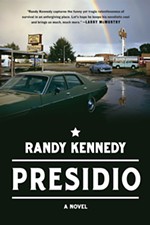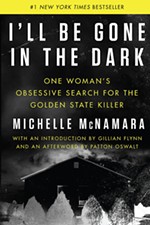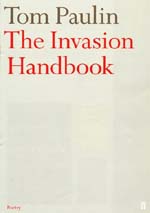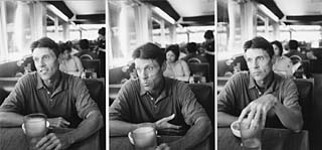The Intellectual Life of the Early Renaissance Artist
Francis Ames-Lewis
Reviewed by Tim Walker, Fri., Dec. 15, 2000
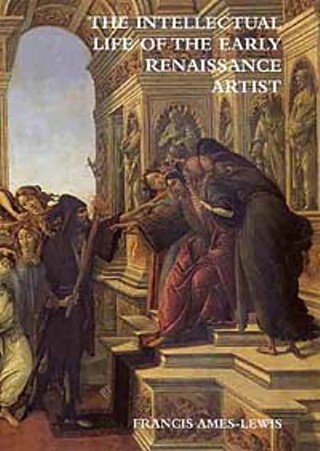
The Intellectual Life of the Early Renaissance Artist
by Francis Ames-LewisYale University Press, 322 pp., $40
Medieval European painters and sculptors were often more "artisan" than "artist," at least in terms of their standing within intellectual culture. But by the time Vasari's Lives of the Artists debuted in the middle of the 16th century, the works, talents, and personalities of artists were regarded highly enough to justify Vasari's popular multivolume treatment. What happened between the 14th and 16th centuries to replace the anonymous masters of the Middle Ages with the greats -- Leonardo, Michelangelo, Raphael, and the rest -- of Renaissance art?
In his gorgeously illustrated The Intellectual Life of the Early Renaissance Artist, Francis Ames-Lewis aims to answer this question. He sets out to track "changes in how painting and sculpture were evaluated during the early Renaissance, both by practitioners and by the societies in which they worked ... [and] to track the development of painters' and sculptors' consciousness that they deserved better than to be classified as craftsmen, which was in general terms their social position at the beginning of the period to be explored."
Ames-Lewis wisely defines his period as roughly 1390 to 1520 -- an era of great intellectual and artistic ferment in which the data and ideals of Renaissance humanism came to the fore in various parts of Europe. Though the focus is on Italy throughout, there are key sections treating Jan van Eyck and particularly the fascinating Albrecht Dürer. Unfortunately, Ames-Lewis spends little time treating the prior (late medieval) social and intellectual conditions of artists, and so we are left too often to infer them from the general statement just quoted.
Though Ames-Lewis is an academic art historian, his writing is mostly clear and jargon-free, and his explication lucid. Indeed, the book is intended for the general reader rather than the specialist, and it is the general reader who will find the most benefit in it. Ames-Lewis explicitly claims no originality for his thesis of the development of artistic consciousness during the early Renaissance, but rather spells out his intention to bring certain interesting themes surrounding this development to a general readership.
Ames-Lewis devotes general chapters to "The Artist's Education and Training" and "The Social and Cultural Activities of the Renaissance Artist" before turning to analysis of specific subjects including artists' antiquarian and archaeological interests, their self-portraits, and Renaissance debates on painting's merit relative to sculpture and to poetry.
The approach is not so dry as it may sound. Through it, the author shows how the great artists of the period conscientiously -- and ambitiously -- worked to locate their own activities alongside those of poets and other courtiers and intellectuals. Ames-Lewis devotes considerable space to the artistic and literary records of Botticelli, Leonardo, Michelangelo, Andrea Mantegna, Raphael, and others; in so doing he reveals the passion with which they defended their arts' rightful place in the firmament of intellectual endeavor. Central to this endeavor was the study of the Classical world: These artists discussed Classical themes in their letters and self-consciously included themes from Greek and Roman myths, poetry, and history into their painting and sculptures. They painted, carved, and cast copies of antique sculptures; they collected antique coins and pottery. Some of them -- Mantegna, for example -- pursued antiquarian interests with such intensity that they came to be consulted as experts by wealthy patrons.
In detailing these pursuits, Ames-Lewis shows us something of the humanity of these men. (Alas, Renaissance society allowed no women to attain to this artistic sphere.) They had a great ambition to be rewarded as social peers of the greatest men of their day. It is to Ames-Lewis' credit that we can see this even as we are led to realize just how different these men were from us in their world-view and preoccupations. For example, the author documents the long debates carried on in the 15th and 16th centuries as to whether painting or sculpture was the superior art. While Ames-Lewis candidly admits that "the debate may seem somewhat vacuous to us today," he shows how the artists' "presentation of their arguments offered them opportunities to show their prowess in intellectual discourse, as well as in the practice of their art." The reader is grateful both for the candor and for the cogent analysis.
It seems somehow easier to get into the lives of these long-dead graphic geniuses when one realizes how much of what they did was done strictly for money or the favor of the powerful. It is bracing to know that, while some of them lived handsomely in villas and palazzos, others went through their money too quickly and died in poverty or bankruptcy. In one particularly interesting anecdote, Ames-Lewis details a years-long epistolary minuet between Giovanni Bellini and the wealthy patron Isabella d'Este, who wanted a devotional painting done in a certain way that did not agree with Bellini's temperament. Bellini put off the project for years until he was allowed to pursue his own theme for the painting. The tale conveys not only the human side of both artist and patron, but the growing status of a wealthy artist secure enough in his position to disappoint the matriarch of the powerful Gonzaga family.
Ames-Lewis does dwell on the great names of the Renaissance more than he might admit, and this creates a problem for his argument. If his thesis is generally valid that artists pursued a self-consciously humanistic course during the period, it should apply generally to the small and the forgotten as well as to the great. While lesser-known artists are certainly discussed, Ames-Lewis gives us little basis to know whether his generalized theory applies universally, or generally, or frequently, or only occasionally.
This is a small point, though. The Intellectual Life of the Early Renaissance Artist is a cohesive treatment that may serve as a better introduction to the field for the curious reader than an explicit survey or primer might. Too often, surveys of art attempt to achieve both thoroughness and balance but succeed in achieving only the illusion of both. This book, by contrast, makes no pretension to comprehensive treatment: The reader can more easily follow the author's explicit, limited thematic argument and come out with an improved understanding of broader Renaissance intellectual and artistic themes. The relative brevity of the text, along with the beautiful art Ames-Lewis has thoughtfully chosen for the illustrations, is further help in this regard. The good result of this enjoyable foray is that the reader may use the book as a springboard either to further studies of Renaissance art, such as those of E. H. Gombrich, or to general historical treatments of the Renaissance intellectual world such as John Hale's.





